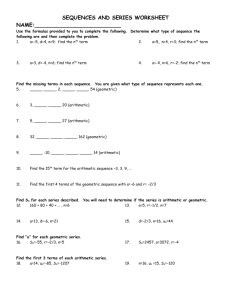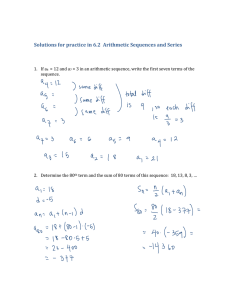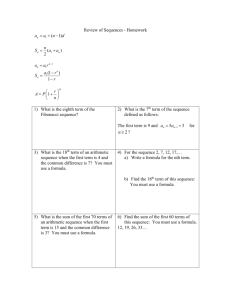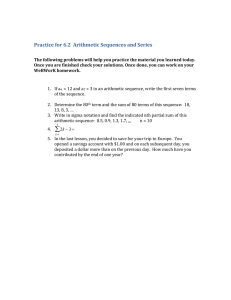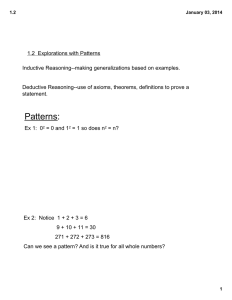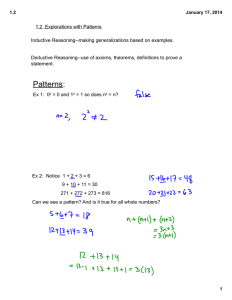Review Topics for Exam 1 Format of the Exam 21 May, 2012
advertisement
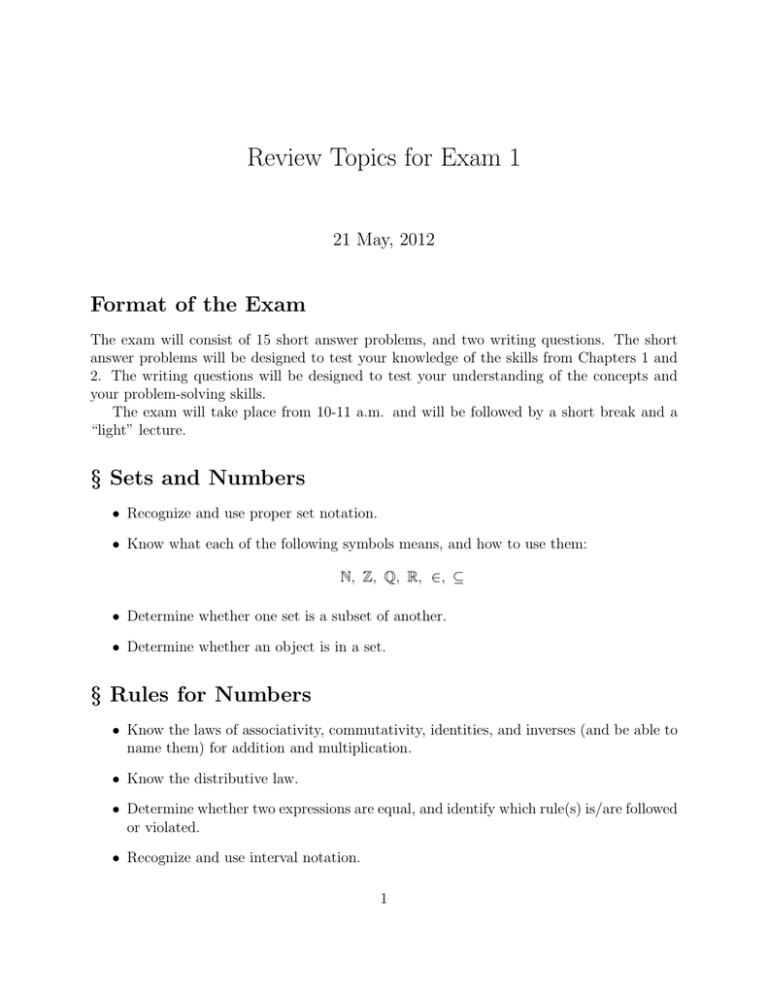
Review Topics for Exam 1 21 May, 2012 Format of the Exam The exam will consist of 15 short answer problems, and two writing questions. The short answer problems will be designed to test your knowledge of the skills from Chapters 1 and 2. The writing questions will be designed to test your understanding of the concepts and your problem-solving skills. The exam will take place from 10-11 a.m. and will be followed by a short break and a “light” lecture. § Sets and Numbers • Recognize and use proper set notation. • Know what each of the following symbols means, and how to use them: N, Z, Q, R, ∈, ⊆ • Determine whether one set is a subset of another. • Determine whether an object is in a set. § Rules for Numbers • Know the laws of associativity, commutativity, identities, and inverses (and be able to name them) for addition and multiplication. • Know the distributive law. • Determine whether two expressions are equal, and identify which rule(s) is/are followed or violated. • Recognize and use interval notation. 1 § Solving Some Simple Equations • Use the rules from § Rules for Numbers to solve equations. § Intro to Functions • Determine whether a rule is a function. • Know what the domain and target of a function are (know the definition and be able to identify the domain/target of a given function). • Evaluate a function. § Sequences • Classify a sequence as arithmetic, geometric, or neither. • Find the common difference (for an arithmetic sequence) or common ratio (for a geometric sequence). • Find the nth term of an arithmetic or geometric sequence, or a sequence which is defined by an equation. § Sums and Series • Find the value of a generic sum (either with a small upper limit or that you can use a trick to simplify). • Find the sum of the first k terms of an arithmetic sequence. • Find the sum of the first k natural numbers. • Find the value of a geometric series with −1 < r < 1. § Counting I • Find the number of ways to put n objects in order. • Find the number of ways to choose & arrange k objects from a pool of n objects. • Use one of the techniques above or the ”options multiply” technique to find the number of different ways to do something. (See class examples and homework problems.) 2 § Counting II • Find the number of ways to choose k objects from a pool of n objects without regard to order. • Know the binomial theorem. • Know how to find the nth row of Pascal’s Triangle • Expand a binomial (e.g. (2x−3y)7 ) using Pascal’s Triangle and the Binomial Theorem. • Rewrite nk as a natural number in standard form. Formulas and Expressions You will need to know the following formulas and expressions, what they mean, and how to use them on the exam: • Formula for the nth term of an arithmetic sequence. • Formula for the nth term of a geometric sequence. • Formula for the sum of the first k terms of an arithmetic sequence. • Formula for the value of a geometric series with −1 < r < 1. • n! n! (n − k)! n n! • = k (n − k)!k! n X n i n−i n • (a + b) = ab i i=0 • 3

